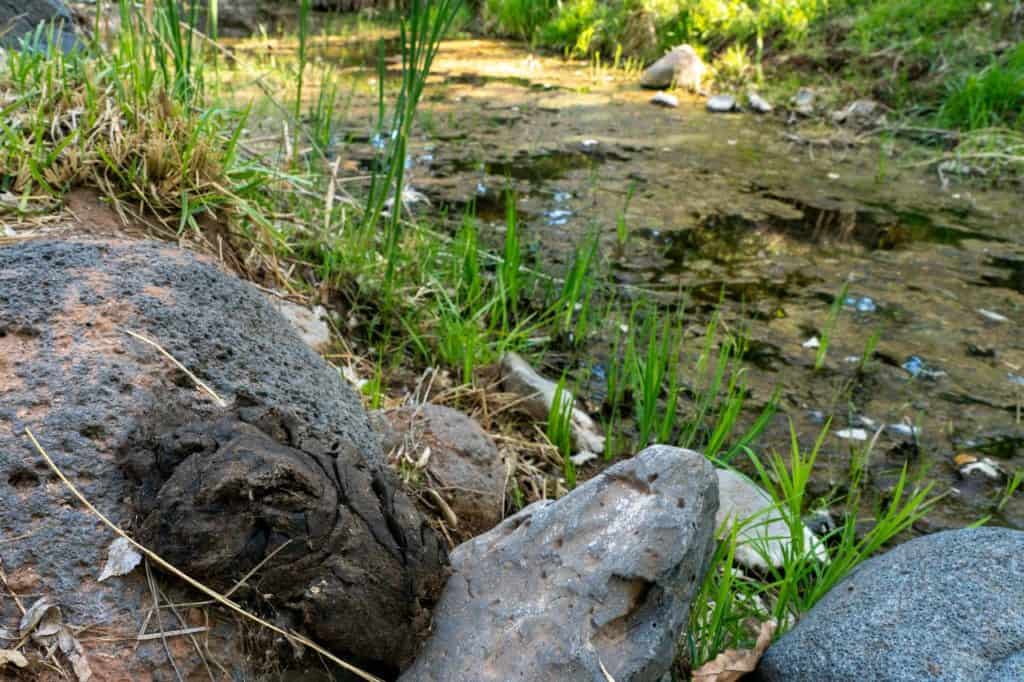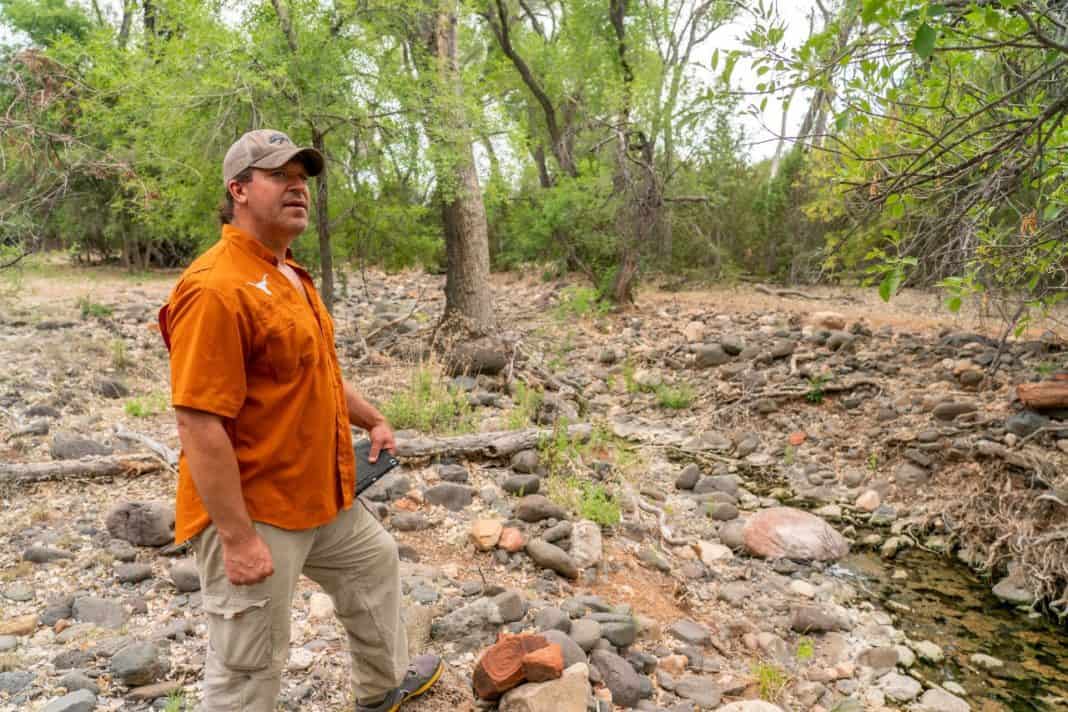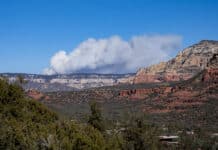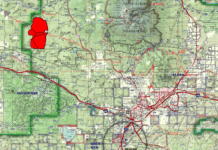A legal settlement signed last month by Coconino National Forest and two watchdog groups is intended to mitigate damage from cattle grazing on sensitive streamside habitats, but it will also allow USFS to continue managed grazing in several riparian areas close to Sedona that are designated critical habitat for threatened species.
An official with Coconino National Forest said this week it will continue to allow grazing in these areas.
The recent settlement with the Maricopa Audubon Society and the Center for Biological Diversity sets rules for inspecting riparian areas and responding to reports of unauthorized grazing, but it also allows for grazing on USFS land in small sections of the Verde river and three tributaries of the Verde that meet the river south of the Village of Oak Creek: Walker Creek, Beaver Creek and Red Tank Draw. These latter three cottonwood gallery forests contain designated critical habitat for four threatened species: The yellow-billed cuckoo, Gila chub, spikedace and the loach minnow.
Riparian forests that develop in the presence of water like Walker and Beaver Creeks comprise 0.4% of the land area of Arizona, but they are used by a large share of the wildlife in the state.
The practice of allowing cattle to graze these riparian areas goes against an agreement signed by Coconino and other Southwest forests in 1998. In that document, Coconino said 99% of the designated critical habitat in the Beaver Creek allotment, which contains parts of Walker, Beaver and Red Tank Draw, — and many other allotments in the region — would be excluded from grazing. However, permitting grazing in the creeks for a small part of the year appears to be a long-standing practice by the forest, occurring before and after the 1998 settlement.
The Allotment Management Plan currently posted by Coconino National Forest for the Beaver Creek Allotment is dated “1996- 2005” and makes no mention of riparian habitat. Posted Annual Operating Instructions were updated more recently in 2018, but they don’t prohibit grazing in riparian habitat; they provide instructions on how much cattle are allowed to graze plants in the riparian habitat — 40% of grasses and 20% of woody species.
The grazing thresholds for Walker and other nearby tributaries represent more careful management than in other riparian areas in the state. Chris Bugbee, a conservation advocate for the Center for Biological Diversity, one of the watchdog groups that sued Coconino National Forest last year over riparian grazing, said that he has seen streamsides in Arizona grazed down to bare dirt. For the most part, that is not what he saw during a survey of Walker Creek last summer, though he pointed to other negative impacts.
“The Forest Service would pat themselves on the back for this,” he said, “[but] it should be off limits to cattle.”
Bugbee said USFS’ use of “utilization standards” for managing grazing on critical habitat was not adequate for protecting streamside ecosystems. He said assessments of how much the riparian vegetation has been grazed are “very subjective.”
“Cattle and cottonwood are not compatible,” he said.
But in their settlement last month, Bugbee’s group and Maricopa Audubon Society, the other party of the lawsuit, allowed language in the document that will permit Coconino National Forest to continue grazing as usual on these spring-fed gallery forests. Many of the allotments close to Sedona containing riparian habitat stipulate that “Livestock have authorized access to a small portion of the creek for approximately 10 days each year.”
Comment from Bugbee on the inclusion of the grazing provision in the settlement was not available as of press time.
Grazing allotments are large, and subdivided into numerous pastures. Cattle are moved frequently from pasture to pasture throughout the year, typically spending cooler months in lower elevations in the Verde Valley and hotter months up on the Mogollon Rim. Cattle aren’t stationed next to Walker Creek and other tributaries for long periods of time, but it doesn’t take a long time for a herd to make an impact.
A llowed numbers of cows on the range are adjusted each year depending on precipitation. In the most recent annual operating instructions for Beaver Creek, USFS permits up to 340 cows in the allotment.
Several months after cows grazed Walker Creek, Bugbee pointed out “chewed up” creek banks, limited “recruitment” — saplings growing into middle and large size trees — and dirt clearings in some places. In some stretches, cow pies dotted the banks and adjacent forest thickly.
A forest with recruitment issues is dominated by giant cottonwoods with only very young trees — middle-sized trees are missing from the mix. Bugbee blames cows for tree non-recruitment issues in Arizona, saying that bovines love to eat cottonwood shoots, which are high in protein, even when grass is also present.

But it should be noted that Walker Creek and other riparian areas are also negatively impacted by high volumes of recreation. Walker Creek, Beaver Creek and other areas close to water saw heavy visitation during the lockdowns of the summer of 2020, including illegal camping near Walker Creek and other streams.
Asked whether Walker Creek would see any changes in grazing as a result of the recent settlement, Kathy Sevy, rangeland management specialist for Coconino National Forest, wrote in an email: “Nothing has changed with regards to management of Walker Creek. The Forest maintains a couple of water gaps that are used by cattle from the Beaver Creek Allotment and the Walker Basin Allotment. As stated in the Settlement there is limited access allowed, for approximately 10 days. The Settlement also states that the riparian area is monitored by Forest personnel, volunteers or the permittee. We are continuing to monitor and use the area as in the past.”
Last year, Maricopa Audubon and CBD gave notice of intent to sue USFS for not doing enough to exclude cattle from riparian areas before eventually filing in September of 2020.
While the suit was being processed and the parties were negotiating, the local national forests started taking action to address the most egregious damage from cattle browsing riparian habitats. USFS partnered with private contractors to remove concentrations of free-roaming cows from the Verde River below Camp Verde.
During two separate operations, in November of 2020 and spring of 2021, the USFS closed portions of the river while contractors using horses and heavy equipment, including a helicopter, rounded up a total of 130 head of cattle.
In its survey, CBD found the greatest concentration of “significant” damage from unauthorized cattle grazing concentrated near the junction of the Verde River and Fossil Creek, where these semi-wild cattle roamed. But CBD’s survey noted “ significant” cattle impacts closer to Sedona. These areas include the Verde River just south of the Sycamore Canyon Wilderness, Walker Creek and Red Tank Draw — the same areas where USFS plans to continue riparian grazing for 10 days each year.






















